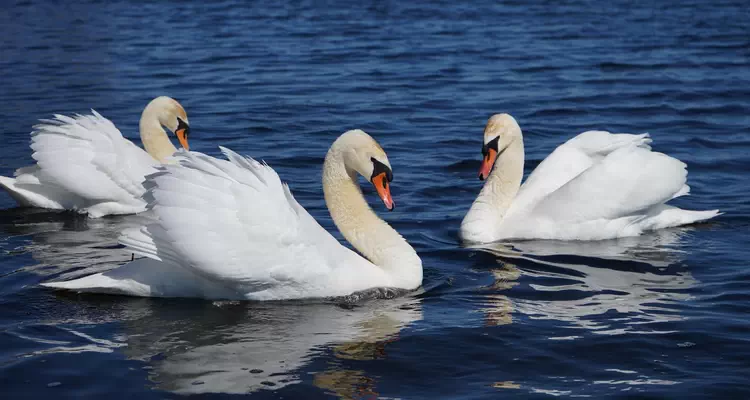The Wild Swans at Coole is a representative poem of W. B. Yeats. Like many other poems of his it is a study in the clash of opposites. It turns on the contrast between the transitoriness of human joy and youth and the permanence of those of natural objects–the eternal passions and vitality of the swans and the evanescence of those in the poet’s heart. When the poet first visited the Coole lake nineteen years ago his heart brimmed with youthful spirit and celestial joy.
At that time the sight of the swans swimming on the lake water and flying through the air delighted him so much that he started counting them. But now a heavy weight of hours has chained and bowed him; he falls upon the thorns of life and bleeds. His youth, energy and vitality are all gone. All is changed with him now. But the birds remain unchanged. They are still swimming on the water or flying above in pair with unwearied joy. Their hearts are still throbbing with love and the desire of companionship. They have not grown old like the poet:
Passion or conquest, wander where they will
Attend upon them still.
Like Keats’ nightingale the swans are conceived to be the voice of romance and of beauty, a voice that is deathless in a world where beauty perishes, love fleets and youth is short-lived. This contrast lends poignancy to the poem.
The Wild Swans at Coole is essentially a romantic poem. It rings with the Tote of personal despondency like the Ode to the West Wind and the Ode to a Nightingale. The uncertainty of his love-affair with Maud Gonne, the talented bewitching beauty, who kept him sandwiched between hope and despair, the political instability of Ireland, the unleashing of violence in the Easter Rising of 1916, the fanaticism and narrow mindedness of the Irish mob, the shattering of his dream of building new Ireland all these depressed his spirit. This depression of his mind finds vent in the line-
And now my heart is sore.
The poem illustrates Yeats’ treatment of nature. Like Tennyson he associates nature with his themes to create a background for reflecting human moods or to provide a contrast. The poem is set in autumn, the season of decay. The trees are leafless. The woodland-paths are dry. A note of melancholy pervades the whole nature. Thus nature reflects the poet’s mood of depression and the ebbing away of his youth and vitality. The evening twilight reflects the darkness that was settling on the poet’s mind at the time. Like Wordsworth Yeats looks upon nature as a constant source of joy and comfort to man. Thus the swans will delight other men’s eyes even when they, at the approach of winter, will fly to some other region and build their nests by some other lake.
The poem is remarkable for Yeats’ symbolism. The most predominant symbol is that of the swans. The swans on the Coole stand for love and passion on the one hand, and for the poet’s youthful vigour on the other. The swan symbol occurs again and again in Yeats’s poetry, but with different significance in different contexts. In Leda and the Swan the swan suggests wild sexuality. The autumnal trees stand for decay of youthful vigour, October twilight for the incoming spiritual darkness: rushes for refuge from spiritual darkness.
In diction the poem is superb. The language is bald, bare and simple like that of everyday life with none of the ornaments of his earlier poetry. Such suggestive expressions as “the bell-beat of their wings”, “the cold companionable streams” add to the stylistic grace of the poem. The rhythm of the verse is wonderfully attuned to the thought-content. The shorter verses alternating with the longer bring out the rise and fall of the poet’s emotion”- his painful sense of the mutability of human life and the immutability of the natural objects. Like Tennyson’s The Lotos-Eaters or Keats’s Ode to a Nightingale the poem is remarkable for the sound echoing the sense. The lines-
And scatter wheeling in great broken rings
Upon their clamorous wings.
with the hard consonants echo the sound of the beating wings of the swans. The lines,
Unwearied still, lover by lover,
They paddle in the cold
Companionable streams…
with the soft liquid consonants perfectly echo the lapping sound of the lake water as the swans paddle there.

